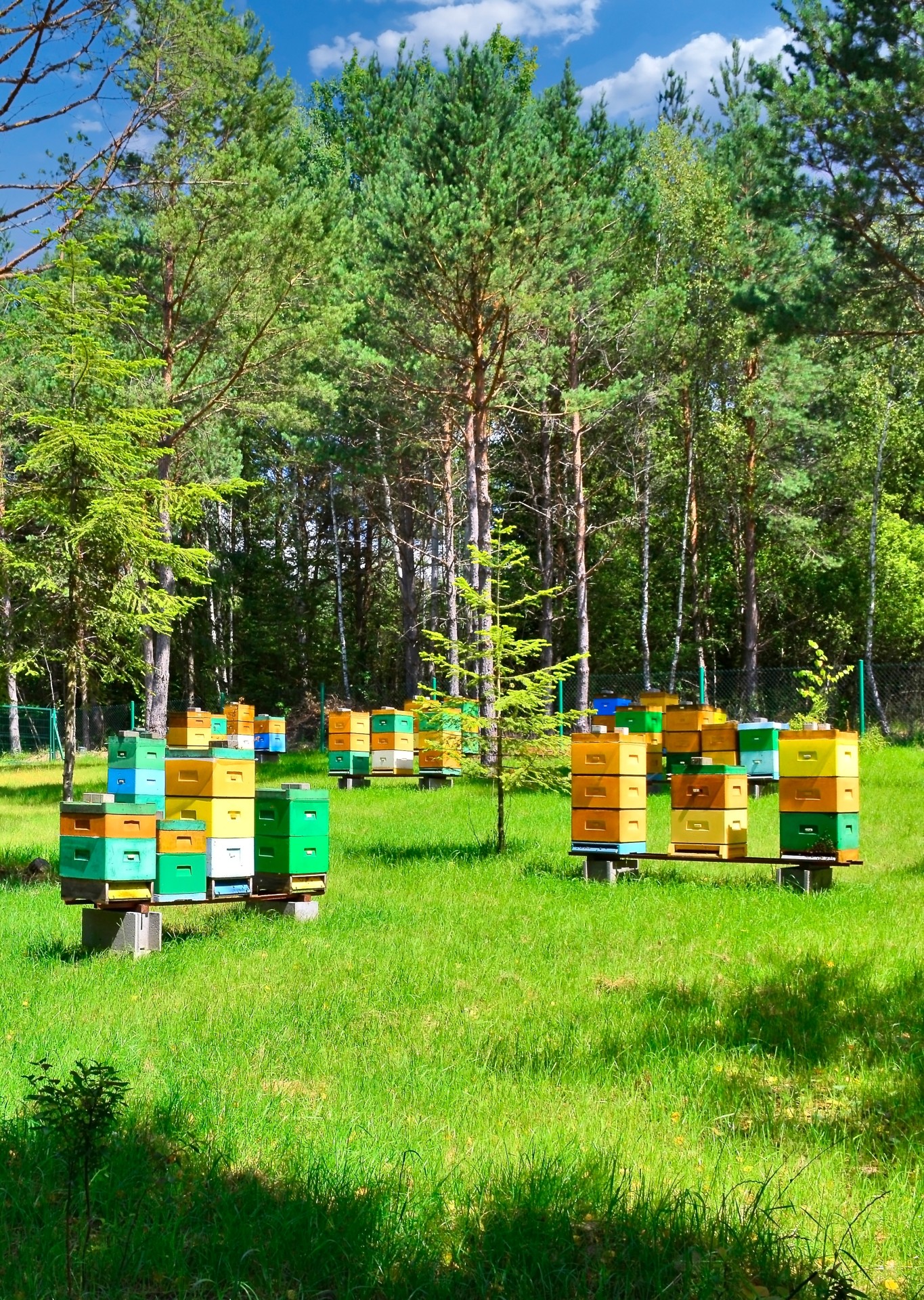Unless you are familiar with bees and beekeeping, apiary may be a new term. Apiaries are a well-known facet of beekeeping, and experienced beekeepers often enjoy sharing their knowledge and experiences in navigating the setup of a new apiary. New beekeepers take note: understanding the what and why of apiaries is essential in setting up a successful apiary, which is a win-win for you and your bees.
Beekeeping 101
The trend of beekeeping continues to grow in popularity, which is good news for the bees. One of the first things experienced beekeepers will tell people is to think about how to set up a successful apiary. If your bees are already on their way, you are a little behind the ball because planning for an apiary should come well before the little buzzers arrive. Regardless, taking the time to get the bees what they need must always remain the highest priority in beekeeping. There are a few things that are essential when planning for an apiary.
What Exactly is an Apiary?
According to Webster's Dictionary, an apiary is "a place where bees are kept” as it relates to hives or colonies. You may run into beekeepers or resources that use the term bee yard instead of apiary, but they are synonymous. An apiary applies to 1 or 100 beehives, making life easier for the bees and beekeepers.
Where Should Apiaries Be Located?
Apiaries should be placed intentionally considering the layout, location, and space available. Beyond just the space where the apiary will be, how hives are placed is also important. Some beekeepers do their hobby on a rooftop, while others have plenty of outdoor space to plan the perfect location. Other considerations include proximity to neighbors, playgrounds, parks, and the home. Every beekeeper faces challenges and must overcome them when planning for an apiary.
Accessibility is crucial when deciding where to place the apiary. The best choice is a safe place for bees in a location where the beekeeper can have access regardless of weather conditions. Beehives become heavy, so the apiary must be accessible by wheelbarrow or vehicle during snowy weather, and a more significant number of hives makes this even more critical. Check with the city and find out if they spray for mosquitoes. If so, place hives away from the road where the spraying will occur.
Things to Watch for in Apiary Placement
There are real threats to bees, and beekeepers deciding where to create an apiary should keep these things in mind. First, bees need water to survive, and if there are not enough resources, they will end up in the swimming pool and can't swim! Bird baths, buckets with sticks for perches, or shallow dishes with water, rocks, and a wine cork make great spots for bees to stop and drink. Bees are all about convenience, so place the water source closer to the apiary than the pool. Large apiaries should have distance from the home and neighbors. Bee poop can make neighbors upset and presents another set of challenges. Always be considerate of your neighbor’s space and do your diligence to ensure your bees have what they need without crossing through their property. It is impossible to control bees, but they will find the closest and most convenient food and water sources.

Get help with your beehive or bee swarm removal! Call Today 760-224-3040 Or 951-265-8292!
Why Apiaries Are So Important
Apiaries are an essential part of every beekeeper’s design. The basic needs of individual colonies should be part of the planning because the proper placement will significantly impact the productivity and health of the honeybee colonies in your care. Beehives must be in a safe and healthy place, sitting securely and level. Apiaries allow beekeepers to expand their hives as swarming occurs. Beekeepers may start with a smaller number of hives and may find they have several more by the end of the summer months. When beehives are too crowded together, the bees may become overwhelmed and need more resources.
A designated space for bees to return after foraging is critical to successful beekeeping and happy and healthy bees. Bees must be protected from predators and elevated off the ground to keep pests away. Well-designed apiaries provide havens for bees, and the design should be thoughtful but can also be modified. Beekeepers planning to have a large group of hives may consider placing them on wood pallets so they can be moved more easily if necessary.
The responsibilities of beekeeping may seem endless, but beekeepers will tell you it is worth it, and the adventure of navigating beekeeping is an overall great experience. If you are in Southern California and want to connect with an experienced local beekeeper for tips on apiary placement and design, contact D-Tek. Dedicated to protecting and raising happy and healthy bees, D-Tek is available to help with bee questions and concerns. Call today at 760-224-3040.
